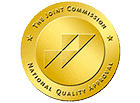When an individual is recovering from addiction, experiencing withdrawal is almost inevitable. Withdrawal occurs when a person in recovery suffers a combination of mental and physical side effects after quitting or reducing intake of an addictive substance. Some may also experience an intensified form of withdrawal symptoms in response to the medication prescribed throughout medication-assisted treatment with buprenorphine. This is known as precipitated withdrawal.
According to the Substance Abuse and Mental Health Services Administration (SAMHSA), the negative side effects of withdrawal can be mild, moderate, or severe. This is because withdrawal symptoms differ and range in extremity depending on the former drug of use and the individual’s psychological and physical attributes. Due to the many risks related to drug and alcohol withdrawal, it is important to gain a better understanding of precipitated withdrawal and how you can avoid it.
What is Precipitated Withdrawal?
Precipitated withdrawal will typically occur when an antagonist drug is authorized to a person that is transitioning into recovery and is fully reliant on agonist drugs. An agonist drug (methadone, buprenorphine) activates and connects to the opioid receptors in the brain.
In contrast, an antagonist drug (naloxone, naltrexone) connects to the receptors and then prohibits them from generating the proper response. Precipitated withdrawal refers to when a person consumes Naltrexone too early on—prior to a proper detox—they are likely to experience drastic withdrawal symptoms.
Although buprenorphine is an agonist, it falls under the group known as “partial opioid agonist”— a drug that stimulates the opioid receptors, only partially. While partial agonist opioids can assist in lessening withdrawal symptoms when administered properly, they have the potential to cause precipitated withdrawal. For this reason, it is crucial that guests aren’t prescribed too early on in the withdrawal process. In order for buprenorphine to be used as a treatment for withdrawal, the body must be completely void of opiates.
What Are the Symptoms of Precipitated Withdrawal?
Withdrawal symptoms in the recovery process are intense as is and they vary from individual to individual. Precipitated withdrawal symptoms are known to be much worse than the general withdrawal symptoms in treatment.
Common symptoms of precipitated withdrawal include:
- Severe anxiety and aggravation
- Muscle aches and pain
- Fever
- Excessive Vomiting
- Digestive issues
- Chills
- Abdominal cramps
- Dilated pupils
- Low blood pressure
- Increased heart rate
Some health risks of precipitated withdrawal can include dehydration and electrolyte imbalance due to sweating and vomiting. Depending on how extreme, the symptoms may cause health problems that could lead to hospitalization.
How to Stop Precipitated Withdrawal
When experiencing typical withdrawal from opiates, studies have shown that micro-dosing with naloxone or buprenorphine, or Suboxone, will help to quickly relieve your pain from the symptoms. To effectively take naloxone or suboxone, you must finish detoxing your body and completely remove all other opiates.
Other remedies for withdrawal are obtainable for those trying to avoid opioids. You can ask your prescriber for alternative medications that will indirectly mitigate the severity of the symptoms. In the meantime, staying hydrated is a high priority even if you are not necessarily thirsty. Keep isopropyl alcohol nearby— slightly sniffing it at a safe distance will help to reduce nausea.
Most importantly, be sure to relax. When you’re experiencing withdrawal symptoms and not feeling all that great, the worst thing you could do is panic and stress yourself out. Stress and panic make situations as well as your symptoms ten times worse. Find easy, quick ways to relax and destress right where you’re at. Make yourself comfortable and attempt to take your mind off of the discomfort you’re feeling. You can begin to distract yourself through your favorite movie or show, reading, calling a friend or family member, or any other healthy distraction.
How Long Does Precipitated Withdrawal Last?
With Suboxone as the responsible drug, precipitated withdrawal symptoms follow abruptly and last anywhere from several hours up to an entire day. The symptoms from Suboxone often occur anywhere from one to two hours after the first dose. Naltrexone-induced withdrawals typically occur within a few minutes after the first dose and can last up to two whole days. Depending on how extensive the symptoms are will revolve around the guest’s dose of choice.
How to Avoid Precipitated Withdrawal
Educating guests on the difference between agonist and antagonist drugs is vital when they’re transitioning into recovery. If individuals are not knowledgeable about the medications that could potentially harm rather than heal—they might find out once it’s too late. Precipitated withdrawal should be common knowledge in recovery so that all know how to avoid it.
Safe and Effective Detox Program
At Royal Life Centers, it is our mission to supply you with the best addiction treatment services for your needs. For that purpose, our trained and certified clinicians will guide you through the withdrawal process safely and effectively.
Royal’s medically supervised detoxification programs ensure that you receive the best care and support to help make your recovery journey a success. In addition, we offer medication-assisted treatment (MAT) services to help reduce cravings and withdrawal symptoms. All of our detox services are paired with dual diagnosis treatment for mental health conditions and counseling to assist you in achieving long-term sobriety.
Our experienced, multidisciplinary team of professionals guides you through the entirety of our substance abuse treatment process. In doing so, you recieve personalized care, support, and guidance throughout your detoxification journey. We are committed to helping you make positive changes that will last a lifetime.
Reach Out for Opioid Detox Today
If you or a loved one is struggling with opioid withdrawal symptoms or the challenges of opioid use disorder (OUD), you don’t have to face it alone. Our opioid detox program provides safe, medically supervised care for people with OUD, including those experiencing opioid withdrawal syndrome, opiate withdrawal, or opioid dependence. A healthcare professional will guide the management of opioid withdrawal using research-based protocols, including buprenorphine inductions, low dose strategies, and tailored buprenorphine doses to reduce withdrawal severity. For people who use fentanyl or short-acting opioids, we carefully monitor the criteria for opioid detox and use tools like the opiate withdrawal scale to track progress. If precipitated opioid withdrawal occurred in the past, or you’re concerned about buprenorphine precipitated risks or drug interactions, our team specializes in the safe administration of medications for opioid detox. Don’t let opioid use disorders, opioid overdose risks, or the effects of drug and alcohol misuse control your life. Reach out today to begin OUD treatment with expert care, personalized support, and lasting recovery.
If you or a loved one is struggling with substance abuse, please feel free to reach out to us at 877-RECOVERY. Our addiction specialists are available 24/7 to assist you through this time and help you find hope in recovery.




